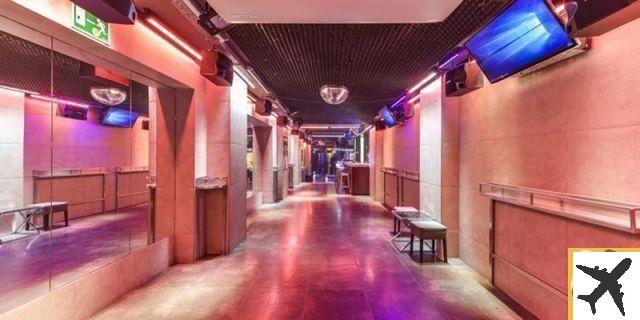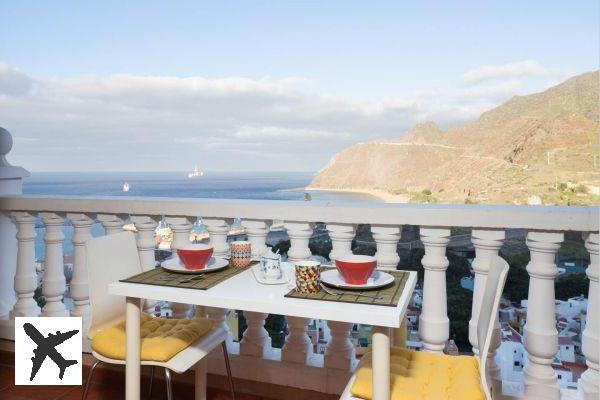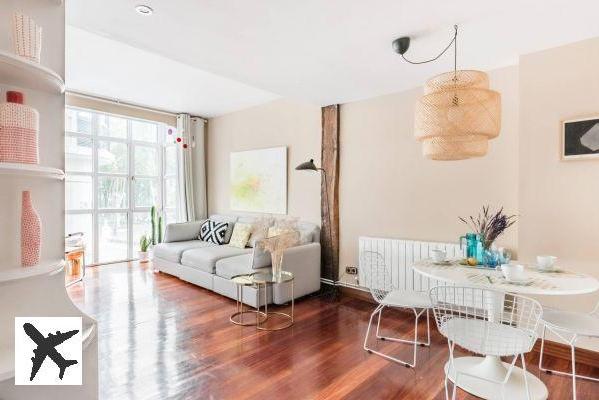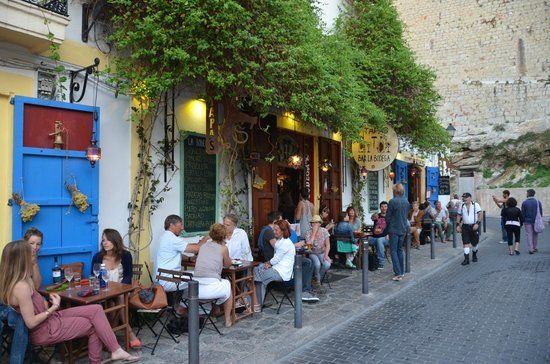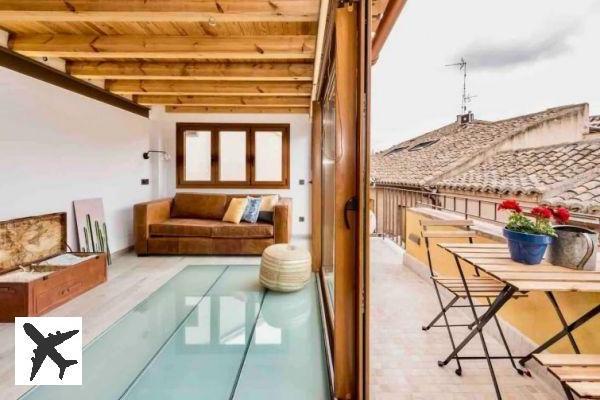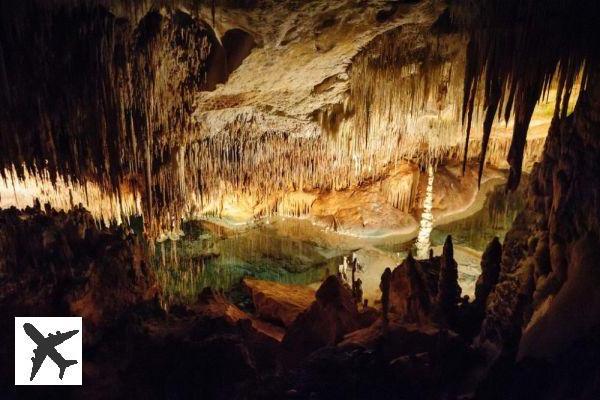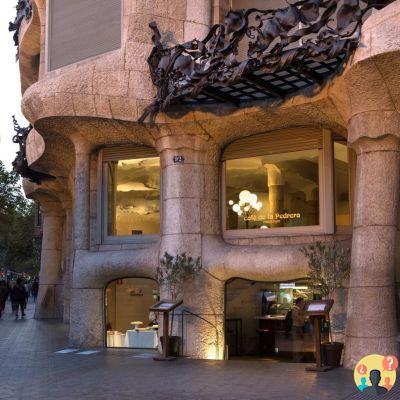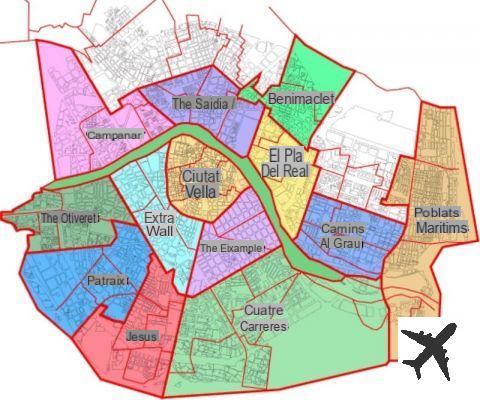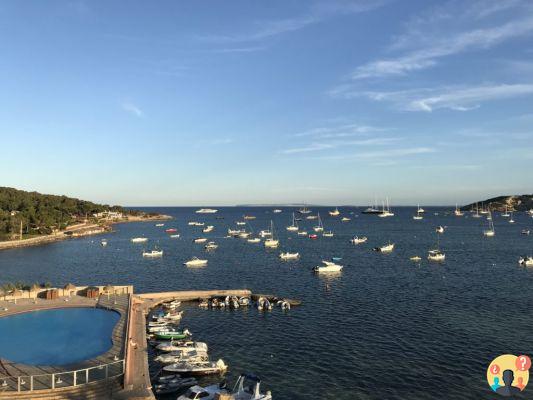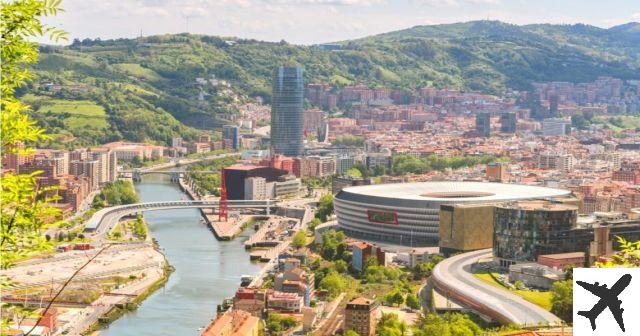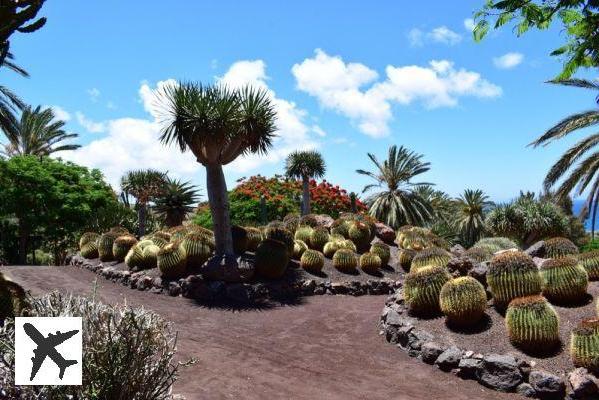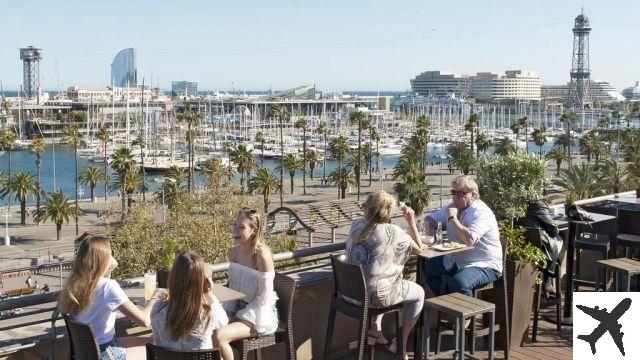Galicia, Spain, was a great discovery when we lived in the north of Portugal. Soon we looked on the map what was beyond the border and identified Santiago de Compostela and La Coruña. So, we decided to explore the place and, in addition to the two cities, we had some surprises with destinations that escape the obvious. I can also say that we had the privilege of meeting the main regions of Galicia! In this way, I will consolidate in this guide my best tips on what to do and visit, the main points of interest, how to make an itinerary, how to get there and where to base yourself there.
ABOUT GALICIA, SPAIN
Galicia, or Galicia – official name – is an autonomous community of Spain. It is an authentic place with culture, history and even its own language. By the way, Galician often resembles Portuguese. In other words: Galicia has charming villages, larger cities, such as Vigo and Corunha, a lot of history and diverse natural beauties.
HOW TO ASSEMBLE AN ITINERARY IN GALICIA, SPAIN
Without a doubt, even a day trip is worth it to anyone staying in the north of Portugal. For example, the so-called Rias Baixas are located a short distance from the border with Spain.
However, for those who have time, I recommend more days in Galicia, as we did in our “Itinerary Galicia, Spain”.
We stayed in La Coruña for 5 days. In addition to having loved the city, it is a very strategic base. After all, it has a central location, making it possible to visit the main Galician regions, such as the Rías Baixas, Santiago de Compostela, Costa da Morte, Lugo and Ourense/Ribeira Sacra. But calm down, I'll talk more about these places. Although most of these destinations work as a day trip (or pit stop on the way there and back), it is worth assessing the interest in each region. Especially in the Rías Baixas, which reserve many fantastic places, and in Ribeira Sacra.
WHAT TO DO IN GALICIA, SPAIN - 6 AMAZING PLACES
1 - RIAS BAIXAS
Just beyond the border with Portugal, we cross the southern coast of Galicia, known as Rias Baixas, which will from Bayonne to Fisterra. The origin of the name comes from the rías, landforms that form an arm of the sea that penetrate the land. In other words, the region is full of beachesAs well as charming coastal villages.
Baiona
In this sense, we visited the beautiful Baiona, which has nothing less than a seaside castle and a boardwalk friendly, in a pleasant atmosphere of a seaside resort. Soon we saw, in the calm waters of the Ribeira beach, One replica of the caravel Pinta, of the Christopher Columbus expedition and which brought the news of the “discovery” of America. Moreover, a fact illustrated in tile wall in front of the beach. We also entered the alleys of the historic center with stone houses. It's worth familiarizing yourself there with the Galician gastronomy: musselsthe Almerino – one of Spain's most iconic white wines, produced in the Rias – and the Spanish classic churros with chocolate. As much as I liked it, I would say that Baiona is a complete example of the Rias Baixas.

Vigo
We also visited the big city in the Rias: industrial Vigo. There the highlight is the historical center, around the Plaza de la Constitucion, and the Monte Castro Park, which has a panoramic view.

combarro
But I confess that I found the tiny Combarro more charming. In other words, the village is a grace with its charming stone alleys. In addition, it concentrates the largest amount of barns – historic building that stored cereals in antiquity – from Galicia. And since we didn't go all the way to the village of Padrón, we decided to try its most famous delicacy – the padron peppers – over there. In other words: it was a big deal to try the small fried peppers with rock salt, with a view of the sea.

Other destinations in the Rias
For those who want to explore the Rias further, I will list some places that with more time I would include. the fishing village O Groove, with a boat trip to the islet of La toja, washed down with mussels and wine (tip from a local). To the Ciés Islands, which we didn't go because of the complex logistics (authorization, reservation required, and arrival is by ferry – from Baiona, Vigo or Cangas -, on specific dates). And also the archaeological sites: the Castle of Santa Trega, from the 1st century, on top of a hill in Guarda, and the Campo Lameiro Archaeological Park, an expressive group of rock art in Pontevedra. Among others, since there is no lack of attractions there.
How much time?
It is certain that if you have a few days available, it is worth investing. Especially if the goal is to go to the beach. But, if the idea is to go straight from Portugal to Coruña, the base we chose in Galicia, you can choose one or two attractions along the way (for example Baiona + Combarro) to get a very representative taste of the Rias.
2 - SANTIAGO DE COMPOSTELA
Considered UNESCO World Heritage Site, the city is the icing on the cake of a trip to Galicia. After all, it's one of most important Christian pilgrimage sites of the planet, possibly being less visited than Rome and Jerusalem. The most iconic monument is the imposing Cathedral, which attracts pilgrims from all over the world, as it houses the tomb of the apostle Santiago. There, we saw hundreds of hikers with their sticks and backpacks used in the roads to Santiago. That's right, there's the Portuguese, English and the main way – the French. On the other hand, we arrived by car and the visit was no less surprising. We toured the historic city impressed not only with the grandeur of the church, but also with the grace of squares and alleys.

How much time?
Although not to be missed, in 1 day it is possible to explore the historic center with peace of mind. It could be a pit stop between the north of Portugal and La Coruña (or vice versa). It also works as a day trip from La Coruña, as it is less than 1 hour from the city.
3 - LA CORUNA
Beautiful La Coruña has many charms. I'd say it's a relatively big city with a small-town feel. Undoubtedly the most important tourist spot is the Tower of Hercules, the only functioning Roman lighthouse in the world. But the beaches, marina and the historical Center are also well worth a visit. I liked it so much that there is a post only with tips on what to do in La Coruña.

How much time?
In terms of attractions, it is possible to visit the city in 1 full day. But what I liked the most was traveling like a local, going to the beach and spending the afternoon at the marina, for example. In addition, the bars are famous for their animation. So, I recommend at least an overnight stay. Or, if you want to use the destination as a base for day trips in the Galicia region, longer: we stayed 5 days.
4 - COSTA DA MORTE
A North coast of Galicia, running from Salpica to Muros, has an impressive name. This is explained by the cliffs, storms and shipwrecks present in the history of the route for more than 100 Km.
finisterra
Facts that we didn't remember in our first and unpretentious stop: a peaceful beach in Fisterra (or Finesterra). From there we head to the iconic Farol, built to avoid accidents in the dangerous waters, and today one of the most visited places in Galicia. Destiny by name "end of the world", was the scene of ancient cults and is shrouded in legends. Today, the place, where Celts, Phoenicians and Romans passed, maintains a mystical atmosphere with the huge number of pilgrims who end their journey there. Camino de Santiago.


Waterfall of Ézaro
Next stop before the return to La Coruña was at Cascata de Ézaro, a beautiful one cache for contemplation and which, according to what we read, is the only European river that turns into the sea in the form of a waterfall. Access is via a wooden path.

Corcubion
On the way back from the Costa da Morte tour, I was enchanted by the outline of the village of Corcubión at sunset. With more time, I would certainly make a stop to enjoy the end of the day, walk through the historic alleys and taste a typical Mariscada from the region of Fisterra.
How much time?
It worked well as a day trip. We leave after lunch from La Coruña, in less than 1 hour and a half each way (adding half an hour to the Cascade). Those who want to spend the whole day can consider other places on the coast, such as the Sanctuary of Nossa Senhora da Barca, in Múxia.
5 - LUGO
Praia das Catedrales
Without a doubt, Praia das Catedrais, in the Province of Lugo, is one of the most famous in Galicia. That's because it's carved by impressive rocks and caves, in the middle of the Cantabrian Sea. We researched the time of low tide on this site and were able to walk along the sand, crossing the natural monuments. The place is really beautiful and magical! But, I have to remember, it gets crowded, including tour buses. By the way, depending on the month it is necessary to make a reservation here. Still, nothing that took away its charm.

Historic city of Lugo
From there we continue to the city of Lugo, about 100 km further on. We chose to have lunch there. O center is fun and takes us back centuries. We also walk around roman walls, UNESCO World Heritage Site, being the only one from that period fully conserved in the world. In time: I found it a convenient stop for lunch, we enjoyed the old quarter so much. As a reference, the Fonte de São Vicente is the heart of it. But I confess that I found part of the wall ugly, of a larger city without charm.


How much time?
Perfect for a day trip. We went to Praia das Catedrais in the morning and came back after lunch in Lugo. From La Coruña to Praia it was about 1 hour and a half, just over 1 hour to Lugo and then another 1 hour back to Coruña.
6 - RIBEIRA SACRA
the region to northwest of Galicia, south of Lugo and in Ourense, is known as Ribeira Sacra. Despite the beauty and diversity, I had the impression of being a precious secret of Galicia, still little explored by foreign tourists. she is full of natural attractions, lots of greenery and spectacular views of canyons🇧🇷 Also have monasteries and churches that explain the origin of its name, in addition to being one of the producing regions of wine oldest in Spain.
For me, the word that sums it up is: landscape. Our tour choice was Viewpoint of the Balcón de Madrid, where we had a picnic. We had a fantastic view of the Sil Canyon, possibly Ribeira's greatest treasure. By the way, there are tours catamaran by the si, which I wanted to do.
With more time, it is worth visiting places like Monforte de Lemos and its monuments and the Wine Interpretation Center. But the truth is that Ribeira Sacra is a destination in itself, with an immense number of viewpoints, forests and unique heritage.

How much time?
Unlike other regions, a day trip to Ribeira from La Coruña is longer. Just to illustrate, a trip to Monforte de Lemos with the Sil Canyon (for example the Mirante Pena dos Matacás or the Catamaran Ribeira Sacra) takes just over 2 hours by road. To visit the Balcon de Madrid, which we did, the distance increases a little more. Maybe this is a pit stop option for anyone coming from Portugal on the way back, passing through the beautiful city of Chaves. However, in this case, the tour would be more comfortable with an overnight stay in Ribeira Sacra.






